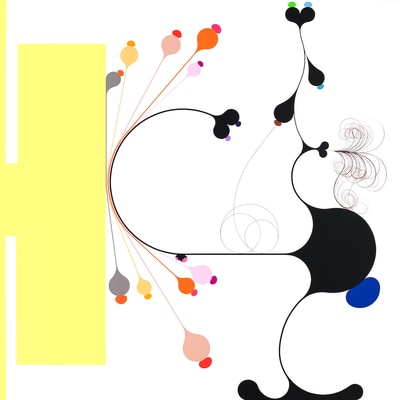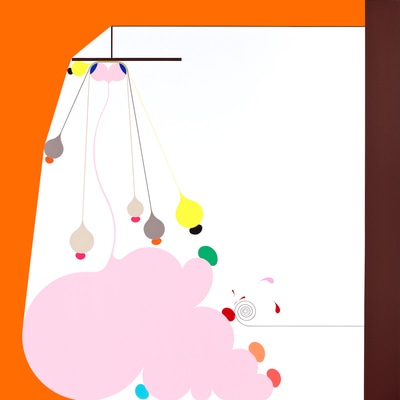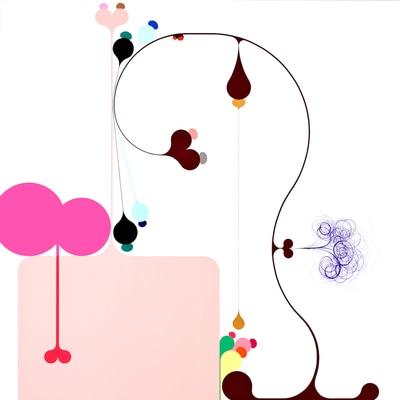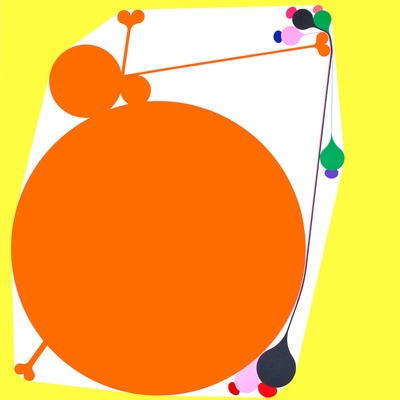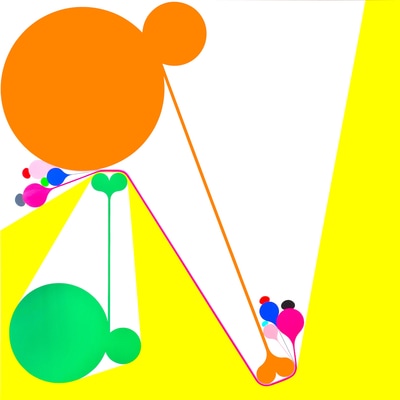PLAYCONICS 2011
PLAYCONICS 2011
Galerie Richard
Excerpts from the exhibition catalog Acrobatic/Erotic Abstraction: Paul Henry Ramirez’s PLAYCONICS by Donald Kuspit
Ramirez is an important new kind of abstract painter—not your old-time transcendentalist (however “transcendental” it is to fly through space), but a playful abstractionist, that is, an abstractionist playing with color and form to exciting imaginative effect.
He uses monochromatic geomorphic forms to build bizarrely biomorphic figures—“iconic” fantasy figures, all the more ingeniously “surreal” because they are absurdly (mis)shaped. Planar fragments, geometrically and chromatically incommensurate, are (dis)organized in eccentric abstractions.
I think that Ramirez offers us, by way of his deceptively simple testicular/breast form, a sort of dream condensation of male and female attributes. They unite in the heart; the fountain-like “discharges” and hair-like curlicues are also heart-shaped—streamlined hearts gushing and throbbing with pleasure, made all the more uncannily lurid and titillating because they are so well and abstractly formed, so meticulously and eloquently rendered. To better describe his abstract images, Ramirez has coined the term “biogeomorphic abstraction” but I think geometry serves biology in them. His figures are abstract hermaphrodites, their sexual attributes geometrically idealized and perfected, making them all the more seductive.
Since 1995, Ramirez has been pushing the boundaries of canvas painting and the way in which the audience experiences it, as the Newark Museum installation makes clear. The architectural space becomes an extension of the canvas paintings and the canvas paintings become part of the architecture. For this exhibition there are two such site-specific wall installations, which invite the viewer to physically experience a oneness with the work.
Galerie Richard
Excerpts from the exhibition catalog Acrobatic/Erotic Abstraction: Paul Henry Ramirez’s PLAYCONICS by Donald Kuspit
Ramirez is an important new kind of abstract painter—not your old-time transcendentalist (however “transcendental” it is to fly through space), but a playful abstractionist, that is, an abstractionist playing with color and form to exciting imaginative effect.
He uses monochromatic geomorphic forms to build bizarrely biomorphic figures—“iconic” fantasy figures, all the more ingeniously “surreal” because they are absurdly (mis)shaped. Planar fragments, geometrically and chromatically incommensurate, are (dis)organized in eccentric abstractions.
I think that Ramirez offers us, by way of his deceptively simple testicular/breast form, a sort of dream condensation of male and female attributes. They unite in the heart; the fountain-like “discharges” and hair-like curlicues are also heart-shaped—streamlined hearts gushing and throbbing with pleasure, made all the more uncannily lurid and titillating because they are so well and abstractly formed, so meticulously and eloquently rendered. To better describe his abstract images, Ramirez has coined the term “biogeomorphic abstraction” but I think geometry serves biology in them. His figures are abstract hermaphrodites, their sexual attributes geometrically idealized and perfected, making them all the more seductive.
Since 1995, Ramirez has been pushing the boundaries of canvas painting and the way in which the audience experiences it, as the Newark Museum installation makes clear. The architectural space becomes an extension of the canvas paintings and the canvas paintings become part of the architecture. For this exhibition there are two such site-specific wall installations, which invite the viewer to physically experience a oneness with the work.
